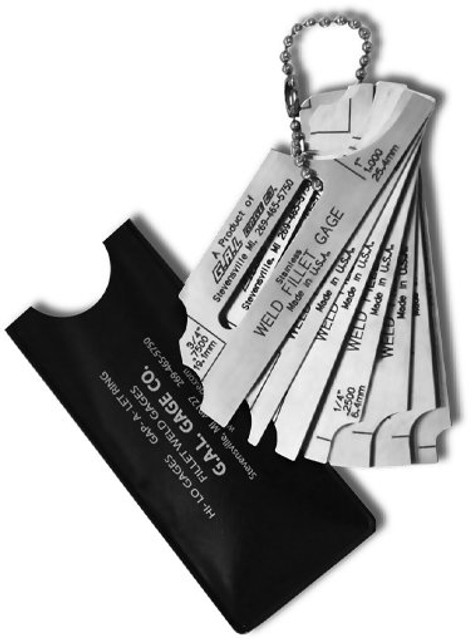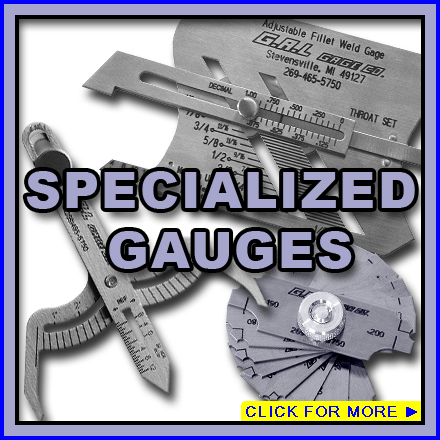The Ultimate Guide to Fillet Weld High Quality Control: Making Certain Toughness and Longevity in Your Welded Joints
In the realm of welding, ensuring the strength and sturdiness of fillet welds is critical for the stability of bonded joints. As we get started on this exploration of fillet weld quality control, we will certainly uncover essential variables that influence weld toughness, dig into efficient evaluation techniques, and review strategies for avoiding common weld issues.
Relevance of Fillet Weld Quality Control
Making certain proper fillet weld quality control is paramount in assuring the architectural stability and longevity of bonded components in various markets. Fillet welds are commonly made use of in architectural steelwork, bridges, stress vessels, pipes, and various other vital framework where the toughness of the weld is vital to general security and performance. Quality assurance measures such as aesthetic examinations, non-destructive testing, and adherence to welding procedures help recognize prospective flaws like absence of combination, incomplete infiltration, damaging, or extreme support.
Key Factors Affecting Weld Toughness
Accomplishing ideal weld strength calls for careful consideration of different key aspects that affect the stability and durability of the bonded joint. The very first vital variable is correct joint preparation, which includes cleaning up the base metals to get rid of any pollutants that might compromise the weld. Additionally, the fit-up of the joint is vital to ensure proper penetration and fusion of the filler product.
The option of the suitable welding strategy and parameters additionally plays a substantial role in determining weld stamina. Elements such as warm input, travel rate, and electrode angle can affect the high quality of the weld. Keeping the right interpass temperature level throughout multi-pass welding is essential to prevent breaking and make sure a solid bond between the layers.
Furthermore, the selection of filler product and its compatibility with the base steels is crucial for achieving high weld strength. Making use of filler material with the suitable mechanical properties can boost the general stability of the weld. Post-weld heat treatment and correct inspection methods are necessary steps in making sure the strength and sturdiness of the welded joint.
Examination Techniques for Weld Integrity

An additional important assessment method is liquid penetrant testing, where a fluid dye is used to the weld surface area - Gauge Fillet Weld. The color seeps into any kind of surface-breaking defects, making them visible under UV light. This technique works for spotting flaws that may not show up to the nude eye


Ultrasonic testing is likewise commonly made use of for inspecting weld integrity. High-frequency noise waves are routed right into the weld, and any type of disturbances in the sound wave pattern indicate potential defects like fractures or lack of combination.
These assessment techniques play an click over here now essential duty in making sure the top quality and integrity of welds, eventually adding to the general strength and longevity of welded joints in industrial setups.
Protecting Against Typical Weld Issues
In order to keep the structural stability of welded joints in commercial applications, it is vital to implement precautionary steps to deal with typical weld defects. One typical issue is lack of blend, where the filler product stops working to bond adequately with the base metals, leading to weak points in the weld. This can be prevented by making sure correct warmth control and making use of the right welding strategy.
Another frequent problem is porosity, triggered by gas entrapment in the weld steel throughout the welding process. To stop this, it is necessary to clean the base steels extensively, utilize dry electrodes, and maintain an ideal welding setting with correct air flow.
Additionally, splits in welds can jeopardize the joint's stamina. To prevent this problem, it is essential to control the air conditioning price after welding, make use of preheating when required, and pick proper welding specifications.
Enhancing Bonded Toughness With Correct Methods
To boost the long life and reliability of bonded frameworks, employing innovative welding methods is imperative. One crucial technique to improve weld toughness is to make sure proper weld grain placement. By positioning the weld grain properly within the joint, the weld's strength and resistance to exhaustion can be substantially enhanced. Additionally, making use of the appropriate welding specifications, such as voltage, current, and travel rate, is crucial for accomplishing a long lasting weld. These specifications straight affect the weld's infiltration, combination, and total top quality, contributing to its longevity.
Additionally, utilizing ideal pre-weld and post-weld heat treatments can help minimize recurring stresses and enhance the weld's sturdiness, making it much more immune to fracturing and failure in time. One more strategy to boost weld toughness is to utilize top quality welding consumables and base materials. Choosing the find out ideal filler metal and making certain the cleanliness of the base metals can stop incorporations and other defects that might endanger the weld's sturdiness. By carrying out these proper techniques, welders can make certain that their bonded joints show extraordinary strength and longevity, meeting the best quality requirements.
Conclusion
Finally, maintaining top quality control standards for fillet welds is essential for making sure the strength and durability of welded joints. By recognizing the key elements influencing weld strength, making use of evaluation methods visit homepage for weld integrity, protecting against common weld defects, and utilizing proper methods, welders can boost the general toughness of their welds. It is critical to prioritize quality control measures to create resilient and dependable welded joints.
In the realm of welding, ensuring the toughness and longevity of fillet welds is paramount for the integrity of bonded joints. As we get started on this expedition of fillet weld top quality control, we will certainly uncover vital variables that affect weld stamina, dive right into reliable assessment methods, and discuss approaches for protecting against usual weld flaws.Attaining optimal weld strength calls for cautious factor to consider of various key factors that affect the integrity and durability of the bonded joint (Gauge Fillet Weld).In verdict, keeping high quality control standards for fillet welds is crucial for guaranteeing the strength and longevity of welded joints. By comprehending the crucial aspects affecting weld toughness, making use of evaluation approaches for weld stability, protecting against usual weld flaws, and using correct strategies, welders can enhance the general toughness of their welds